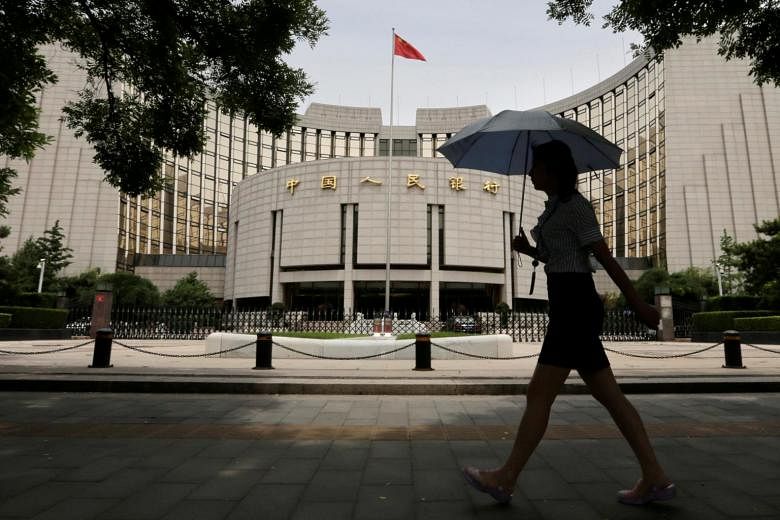SHANGHAI (REUTERS) China's central bank left short-term rates unchanged on Thursday (Sept 27), choosing not to follow a benchmark interest rate rise by the US Federal Reserve despite the risk that it could put renewed pressure on the yuan.
The move by the People's Bank of China (PBOC) means that it did not immediately adjust borrowing costs for interbank loans after the US Federal Reserve raised its key rate overnight.
While the PBOC had been expected to stand pat and has not always followed the Fed in lockstep, the decision highlights diverging policy paths for the world's largest economies, with China's economy slowly losing momentum and facing more pressure from escalating US trade tariffs.
The Fed, on the other hand, sees the US economy growing at faster-than-expected pace this year, with only a slight slowdown in 2019.
China has, in fact, been easing credit policies and trying to reduce financing costs in various ways in recent months as economic activity has softened and US trade threats mount.
The PBOC also said it had skipped open market operations on Thursday as liquidity levels in the banking system were "relatively high".
The PBOC did not mention interest rates on reverse repos in a statement on the its website, but attributed "relatively high" liquidity levels to quarter-end fiscal expenditures, which could "absorb factors including maturing reverse repos and government bond issuance".
Despite the widely expected Fed move, most traders and analysts had said the PBOC would keep the borrowing costs on hold for the second time running.
It also stood pat in June after a Fed hike. In March, the PBOC raised short- and medium-term rates right after a Fed hike.
"There is no regular monetary policy meeting in China, and hence it can adjust rates any time. Skipping OMO today per se does not have an implication on future rates move," said Frances Cheung, head of macro strategy for Asia at Westpac.
"That said, this time round, there is minimal pressure for the PBOC to hike OMO rates given the narrow spreads with market rates."
The interest rate for seven-day reverse repurchase agreements stood at 2.55 per cent in the last cash injection on Sept.20, while market rates largely swung in a range of 2.55 to 2.7 per cent in recent months.
Reverse repos are one of its most commonly used tools to control liquidity in the financial system.
The PBOC has not changed benchmark one-year lending or deposit rate since October 2015.
With 60 billion yuan (S$11.93 billion) worth of reverse repos maturing on Thursday, the PBOC drained the same amount of funds from the money market for the day.
The yuan was little changed after the Fed and PBOC decision.
Chinese authorities took several steps last month to stabilise the currency after largely standing aside and letting it fall for 10 straight weeks over the summer. But analysts expect it will come under renewed pressure in coming months if the US dollar remains buoyant and as US tariffs start to bite on China's exporters.

